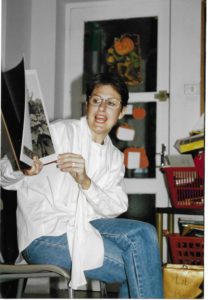I am a 30-year veteran of teaching in classrooms with students of all ages and grade levels: Lower and upper primary; secondary school; and university undergraduate. For me, teaching wasn’t simply a profession. It was a vocation to which I brought a passion for facilitating my students’ learning regardless of their age.
Students are smart and know if a teacher’s intentions are genuine or not. I’ve heard students complain about the commitment of some teachers saying: “They don’t smile genuinely – their eyes don’t crinkle.”
All students are gifted in some way – academically, artistically, athletically, as peacemakers or creative thinkers. Yet, students come to the classroom with their unique learning challenges in either literacy or numeracy or both. They may have emotional challenges, lack self-confidence, aggressiveness toward others, an inability to stick with a task or insatiable need for love and affection. Regardless of the challenge, each child deserves a teacher’s respect.
In my technical role at Creative Associates International, I draw on my three decades of classroom experience and continued passion for teaching to confront educational challenges facing teachers in a variety of countries and educational contexts. The common situation is a combination of the following: Can a teacher in a poorly resourced school, with limited or no financial resources and a classroom of upwards of 50 students make a difference in a student’s interest in learning?
Though not ideal, I believe the answer is “yes.” I’ve seen plenty of success stories – and they typically rest on the skills, dedication and merits of the teacher. Consider the following examples:

Teacher’s engagement: Research has demonstrated that retention of content is directly proportional to a learner’s active engagement with the content. I visited an upper secondary math class in Northern Nigeria. It was a boys’ school serving a broad community of several schools which closed and never re-opened because of Boko Haram violence. The class had more than 100 students. Desks were jammed together and, to move about the classroom, students had to climb over one another.
Yet, this teacher did not let this inhibit how he engaged with his students. He did calculation competitions by having several students come to the chalkboard to see who could solve the calculation the fastest. He then asked the ‘winner’ to explain the strategy or steps for solving it. Students raptly watched their classmates and applauded the winner.
While the classroom facilities were poor, the teacher’s enthusiasm and commitment to his students were high. These attributes have merit. Consider comments by Stanford Professor Linda Darling-Hammond, Ed.D., who was quoted in this article: “We actually learn in a state of positive emotion much more effectively than we can learn in a state of negative emotion. That has huge implications for what we do in schools.”
Teaching beyond the curriculum: In Yemen, where I served as the Senior Education Advisor for USAID (2005-2010), I observed a transformation in teachers during academic summer camps. These camps provided an opportunity for teachers to engage with students without the stress of covering every inch of the curriculum or to try out new pedagogical approaches.
Instead, they made learning fun. Upon returning to school in the next academic year, teachers remarked that the summer experience helped them to see their students as individuals and not just a number. They began to care about them. Students said that their teachers were kinder, used new teaching strategies, made learning fun and encouraged them to stay in school despite pressures to take on family chores or hawk goods in order to support their families.
See more about making education fun in this video from Timor-Leste.
Home-school partnerships: Our implementation efforts do not begin and end at the classroom door. They include the student’s family, caregivers and others who provide support outside the classroom. In Jordan, the USAID-Education portfolio built and renovated schools, while simultaneously working in partnership with the whole school community (parents, teachers, and students) to establish a vision and mission for their schools. As a result of this effort, these schools found that teachers who otherwise might have requested transfers stayed at their school because they felt supported and appreciated by the parent community.
Student engagement in developing the school ethos inspired pride in their school, and parents felt welcomed and contributed to the school’s well-being through fund raising, supporting extracurricular activities, and tutoring. These schools became community hubs and, in some communities, drew students away from private schools to public schools.
See more about the home-school partnership in this short video from Nigeria:
In the end, showing love for students—through small but meaningful gestures of kindness—is far and away the most impactful thing life-changing teachers do. Even in the most resource-poor environments, I’ve heard students laud the teachers that demonstrated they cared through home visits, calling them by name and not by number, asking how they are doing, providing a word of encouragement or extra support.
None of this undermines the need for teachers to have knowledge, skills and resources to ensure student learning, but those skills without positive active engagement, parental partnerships and a demonstration of love only get students half the way there.
Susan Ayari is Creative’s Director of Programs, Education for Development Division, based in Chevy Chase, Maryland.

